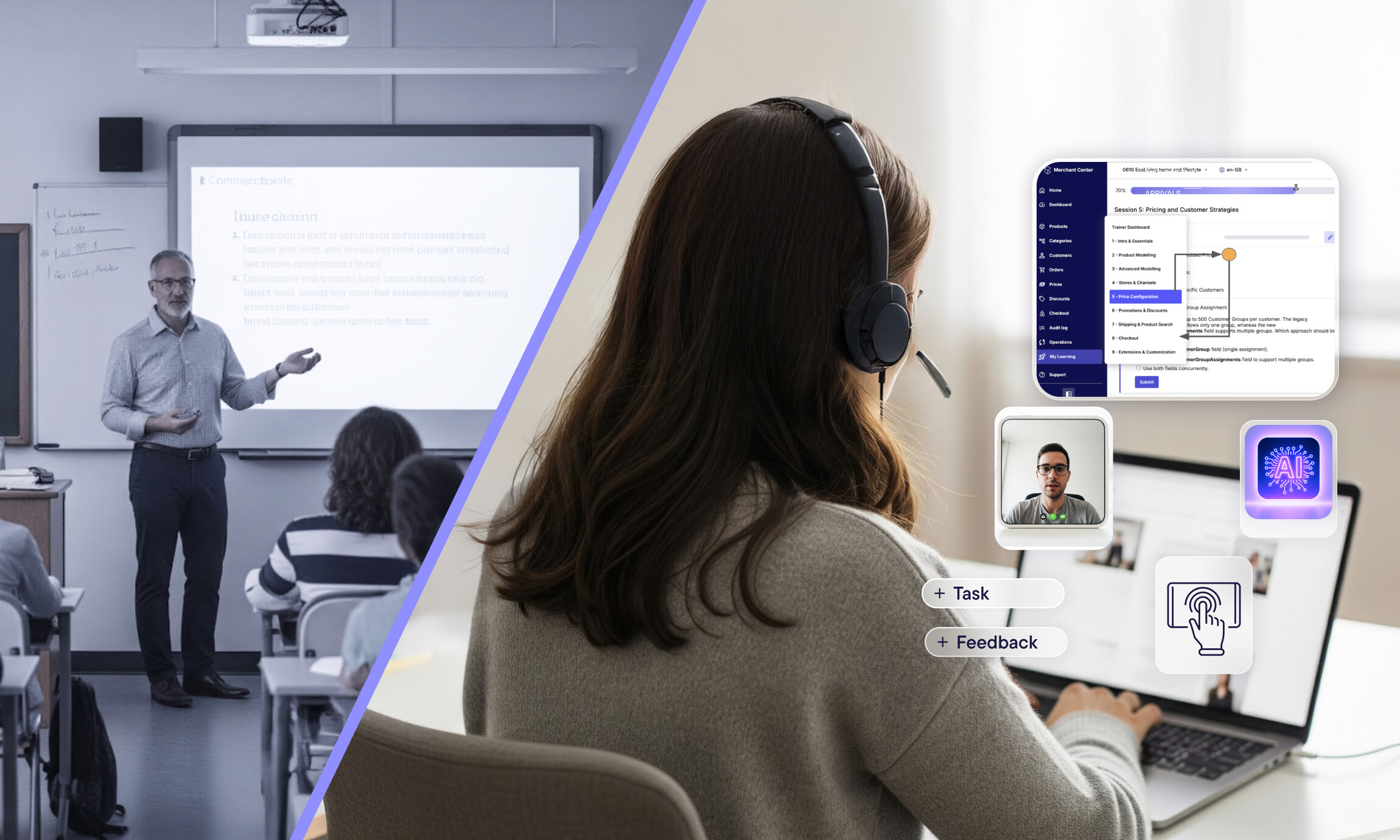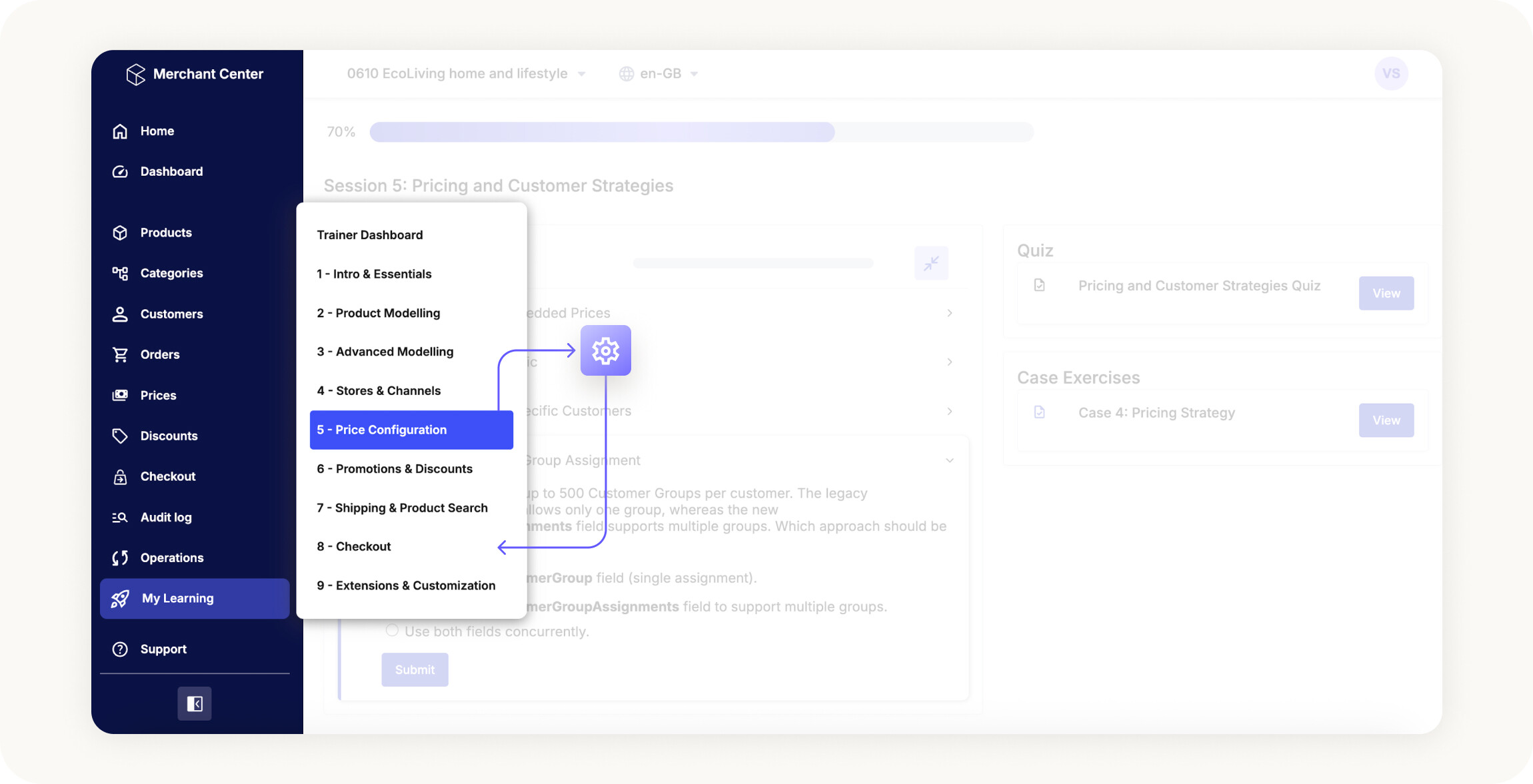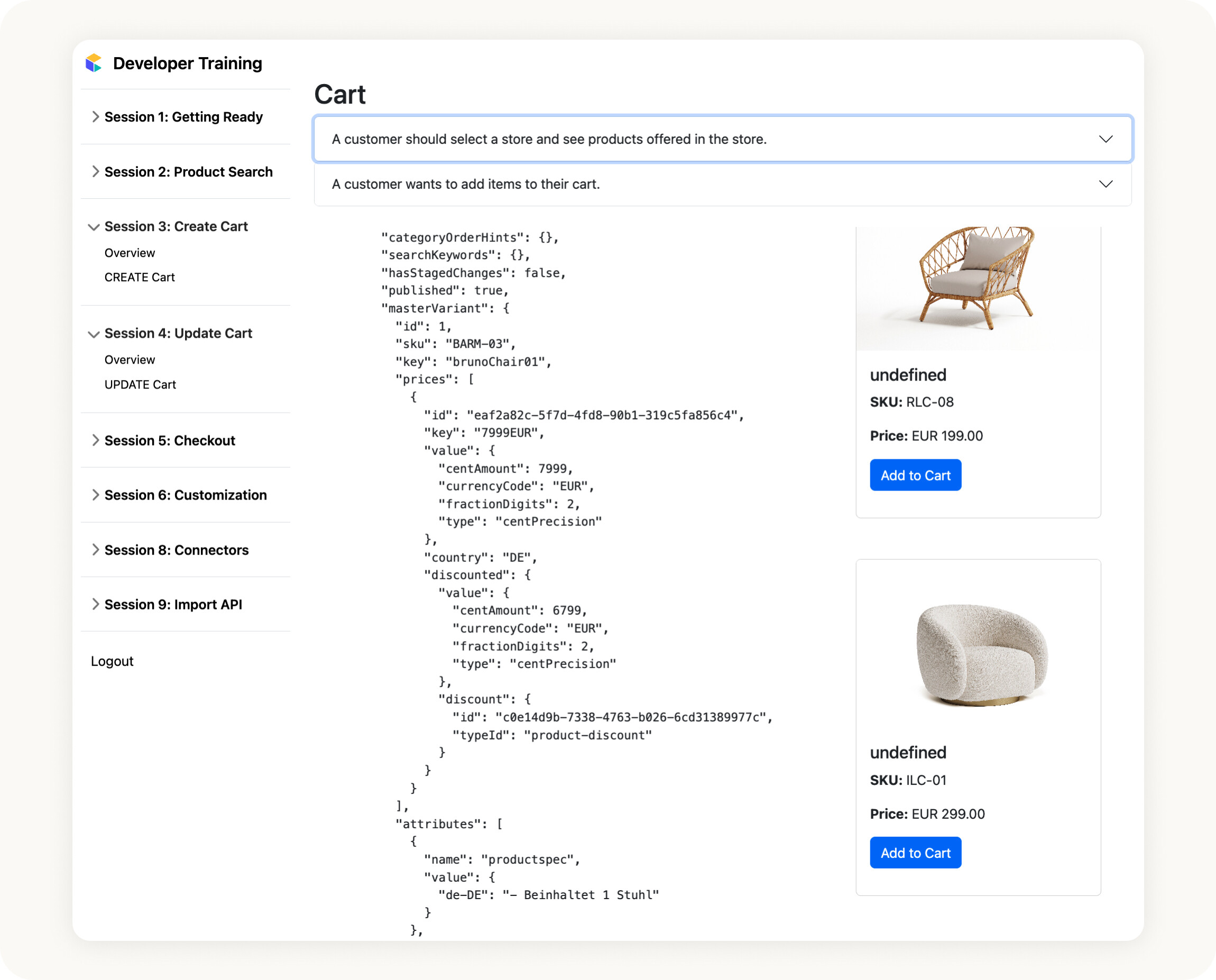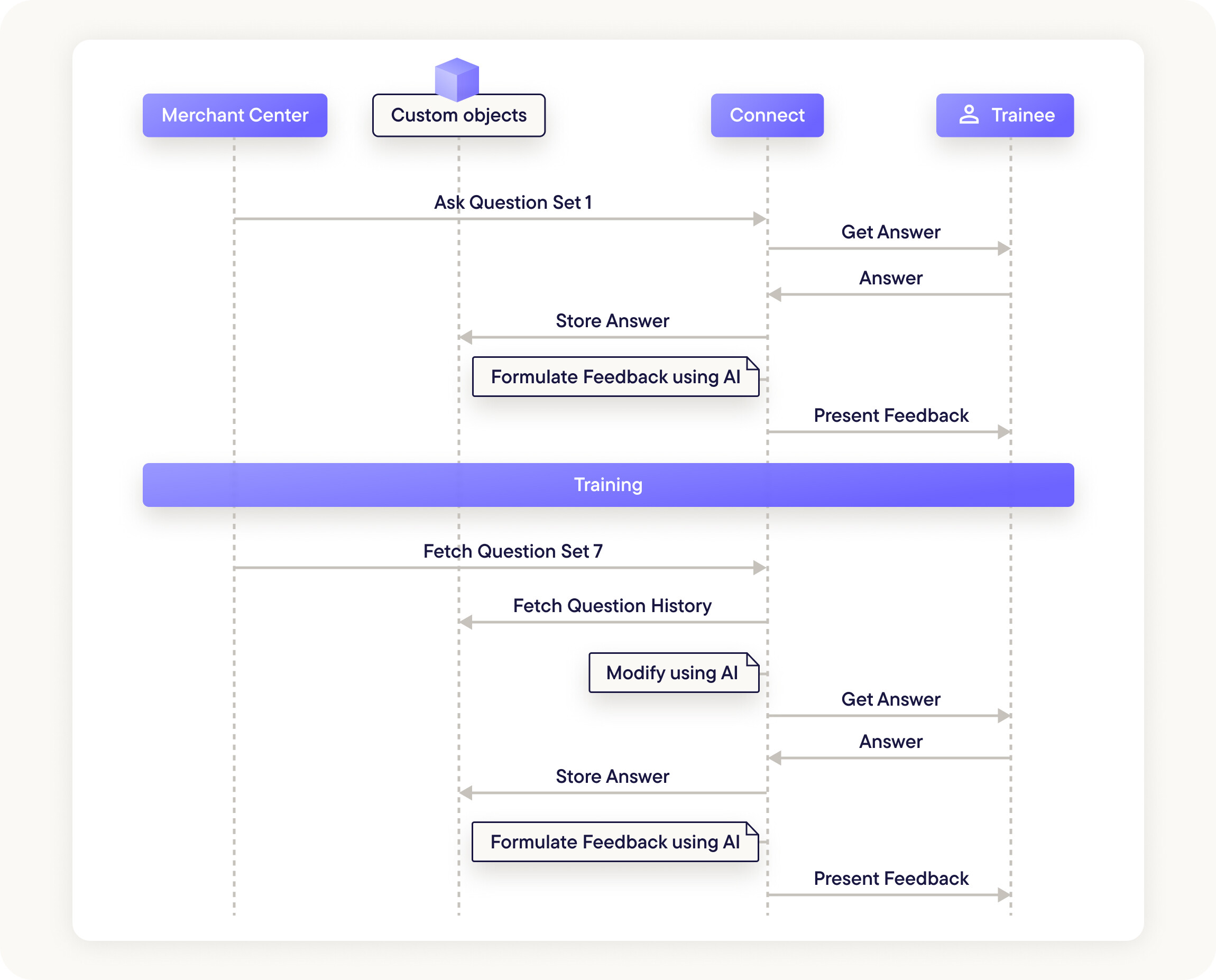
What you’ll learn:

Challenging traditional teaching and training
Things move fast at the moment. We might not only feel overwhelmed, but also quickly forget how things actually have been for so many years. Training is no exception. For a long time, software and technical training followed identical, ever-repeated flows.
| Structural component of the training | Objectives | Typical format of delivery | Who controls the delivery? |
|---|---|---|---|
| Concept delivery and introduction | Trainees understand the needed concepts and gather additional information. | Presentation. | Trainer. |
| Exercises and tasks | Trainees apply learned concepts and provide feedback on their learning progress. | Handouts, quizzes. | Trainer, learning environment. |
| Discussion | All parties reflect on the outcomes and approaches to achieve them. | Free discussions, Q&A. | Trainer. |
The 2022 pandemic didn’t change this dynamic much, except by replacing the classroom with virtual meeting tools, such as Zoom or Google Meet. Whiteboards replaced the blackboards, and a mouse, the chalk. Reflecting on it now, conference and collaboration tools have helped us deliver the content online. Breakout rooms, chat, live polling, screen sharing and online learning environments kept engagement high (or higher) and ensured trainers were in constant contact with the individual learner. We, commercetools’ trainers, also learned a few didactic tricks to ensure that all class participants were attentive to topics under discussion and involved in the given exercises.
Good teaching has always tried to handle concept delivery in a way that maximizes discussion time. We all know examples of different kinds of training that presented trainees with never-ending slide sets, exhausting speeches and sessions that left no room for absorption and reflection. Our approach at commercetools is to challenge traditional methods in our instructor-led trainings — using AI.
AI-enhanced training in the Merchant Center
AI presents opportunities in many applications, and training is no different. At commercetools, we started to move away from traditional teaching by leveraging AI in many training components, such as:
AI-enhanced teaching and training enable the transfer of learning activities from isolated platforms into the trainee’s actual working environment. In our Composable Commerce Functional Architect course, exercises and quizzes now appear directly within the commercetools Merchant Center, giving us full control over how AI is integrated, both in shaping the questions and generating tailored feedback based on user responses.

commercetools Composable Commerce developer courses teach the support and development of a complex eCommerce infrastructure. Hence, quizzes and coding exercises moved from the previously used learning environment and handouts to a digital storefront. Trainees see the programming exercise, related links to the API documentation, sent and received data, as well as the effect on a customer experience in a frontend environment.

In addition to moving training sessions to real-life tools, our training is evolving in the following ways:
We start sessions with a limited set of slides to introduce big-picture concepts. The idea is to remove unnecessary content from the screen, so trainees can focus on topics.
A combined use of standard commercetools technology and AI assesses the trainees’ input to exercises and provides feedback in natural language.
The trainer can focus on evaluating class performance, discussing properties of submitted code like correctness and performance, directing trainees to reflect on their approaches to the exercises.
| Structural component of the training | Delivery is controlled by whom? |
|---|---|
| Concept delivery and introduction. | Your working tool and the trainer. |
| Exercises and tasks. | Your working tool enhanced by AI technology. |
| Discussion. | Trainer. |
We can now say:
commercetools Connect, our framework to streamline commerce integrations, makes it easy to integrate AI-assisted content directly into our Merchant Center.
To make adequate and full use of AI support in our training, a shift towards using an outcomes-first training delivery methodology was required (a broader use of the known “Jobs-To-Be-Done” framework).
At commercetools, a typical training consists of 9 to 12 sessions of 1 hour and 15 minutes, with a break between them. The new focus allowed starting every session with a different teaching methodology, making the entire training more interesting and fun to go through.
The additional homework step to transfer skills learned when doing exercises in the learning environment is no longer needed. Trainees learn where trainees work — the Merchant Center.
And this came as a positive surprise:
Trainee-Trainee- and Trainee-Trainer interaction time increased. We found that we now have more time to reflect on tasks, discuss variations, look at performance, inspect code quality, invent infrastructure changes and more, because AI and commercetools take over some of the ROT (Repetitive, Ordinary, Trivial) tasks a trainer had to do before.
We can go further. AI technology can be a wonderful assistant and increase your learning progress using the flashcard principle methodology based on spaced repetition. What we want is not only to present trainees with their tasks in our Merchant Center, but also to have AI modify them based on a trainee's role, his/her learning speed, and answers to previous questions.

As a result, our AI-enhanced training adds personalized questions about topics answered wrongly into later sessions to enhance and foster a trainee’s learning progress.
What’s next?
There’s no denying that AI is transforming traditional training methods — and we at commercetools are fully embracing the change. Tasks now appear directly within the trainee’s working environment — the Merchant Center. Solutions and responses are evaluated using Composable Commerce technology, and personalized feedback is presented or rephrased by AI. Task sequences and reviews are dynamically adjusted to the trainee’s progress, ensuring a more efficient and contextual learning experience.
Our AI-enhanced training at the Merchant Center increases class time for general interaction, communication and reflection. This is great news! After all, learning is a social activity. Isn’t that why we join classes?
For more information about the commercetools training and certification program, please get in touch with the team at training@commercetools.com.